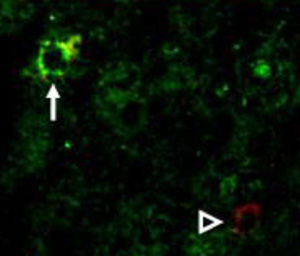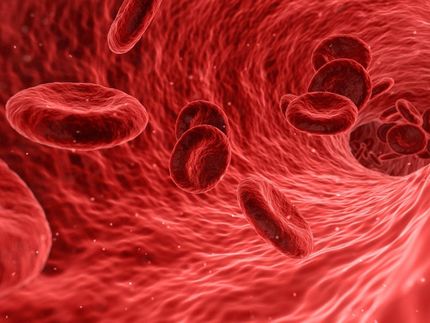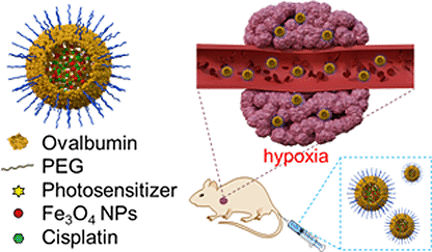Multiple Sclerosis: Benefactors in the Brain
Advertisement
The inflammatory process in the brain of multiple sclerosis patients is triggered by their own immune system. However, there is one type of immune cells that seems to fight against the destructive progress - and might be used for therapeutic purposes in future.

In the inflamed brain regions of multiple sclerosis patients, you can find T-cells with destructive impact (red), but there are also T-cells with protective function (green). This has been established by researchers of the University of Würzburg. The HLA-G surface protein, which is only present on the protective cells, is shown in green.
Heinz Wiendl
These "beneficial" immune cells display a propensity to migrate from the blood into inflamed nervous tissue. "Drawn in by specific chemoattractants, they obviously counteract the detrimental effects of other immune cells in the brain," explains Heinz Wiendl, Professor at the Department of Neurology of the University of Würzburg.
Wiendl's research group presents this new research results in the journal Annals of Neurology. The findings are based on a variety of experiments using biomaterial from multiple sclerosis (MS) patients including blood, cerebrospinal fluid and tissue of the central nervous system (CNS).
A concept for a new form of therapy?
Thus, this work represents a demonstration of the existence of protective elements in the immune activities within the brain of MS patients. Conceptually this beneficial inflammatory factor should counterbalance inflammation in the CNS, but their impact obviously is not strong enough to dampen the disease. However, the notion of such activities might be enhanced in a therapeutic approach eventually benefiting the patients.
How can this be achieved? "An answer to this question as well as a possible practical approach is the long-term objective of our work," says Wiendl. But the next step for the Würzburg researchers is to characterize this regulatory T-cell population more precisely and to find ways of using them for therapeutic purposes.
Interesting molecules on the surface
The beneficial immune cells have been identified as so-called naturally regulatory T-cells. Wiendl's team discovered and described them in a publication in the journal Blood in 2007.
The characteristic of these cells: On their surface, they express a protein called HLA-G, which is attributed to have a strong immunosuppressive function. The signal for the migration of the cells into inflamed tissue is obviously influenced by another surface molecule, the so-called chemokine receptor CCR5. This is an additional new finding of the Würzburg scientists.
Original publication: Huang YH et al.; "Specific Central Nervous System Recruitment of HLA-G+ Regulatory T Cells in Multiple Sclerosis"; Annals of Neurology 2009

























































